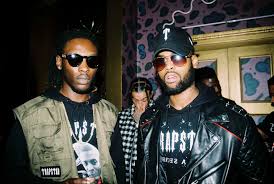Trapstar Clothing, a brand that has become synonymous with urban streetwear, has captivated the fashion world with its edgy designs and cultural relevance. Known for its bold graphics and distinctive aesthetic, Trapstar has built a loyal following among celebrities and fashion enthusiasts alike. This article delves into the origins of Who Owns Trapstar Clothing, its founders, and the journey that has shaped the brand into a significant player in the fashion industry.
The Origins of Trapstar Clothing
Who Owns Trapstar Clothing was founded in 2005 by a group of friends from West London: Mikey, Lee, and Will. The trio started the brand with a shared vision of creating streetwear that reflected the gritty, vibrant energy of their surroundings. Initially, they began by making custom t-shirts and selling them locally, but their unique designs quickly gained attention, propelling Trapstar from a local phenomenon to an internationally recognized brand.
The name “Trapstar” itself is a fusion of “trap” and “superstar,” reflecting the founders’ ambition to rise from humble beginnings to global stardom. The brand’s tagline, “It’s A Secret,” adds an element of mystery and exclusivity, appealing to a generation that values authenticity and individuality.
Founders and Their Vision
The core team behind Trapstar—Mikey, Lee, and Will—have maintained a hands-on approach in the brand’s evolution. Each founder brings a unique perspective and skill set to the table, contributing to the brand’s innovative designs and strategic direction.
- Mikey is often seen as the creative force, with a keen eye for design and a deep understanding of street culture.
- Lee brings strategic business acumen, helping to navigate the brand through the competitive landscape of the fashion industry.
- Will complements the team with his expertise in marketing and branding, ensuring that Trapstar’s message resonates with its target audience.
Their combined efforts have established Trapstar as a brand that not only creates clothing but also tells a story—one of perseverance, creativity, and the power of street culture.
The Rise to Prominence
Trapstar’s rise to prominence can be attributed to several key factors. One of the most significant is their ability to collaborate with influential figures and other brands. Collaborations with the likes of Puma and celebrities such as Rihanna and Jay-Z have elevated Trapstar’s profile, introducing the brand to a broader audience.
Additionally, Trapstar’s presence in popular culture—particularly within the music industry—has played a crucial role in its success. The brand’s connection to hip-hop and grime scenes has helped cement its reputation as an authentic representation of urban streetwear. High-profile endorsements and frequent appearances in music videos and social media posts have further solidified Trapstar’s position in the fashion world.
Celebrity Endorsements and Cultural Impact
One of the defining features of Who Owns Trapstar Clothing is its strong association with celebrity culture. Celebrities such as Rihanna, Cara Delevingne, and A$AP Rocky have been spotted wearing Trapstar, giving the brand an immense boost in visibility and credibility. Jay-Z, in particular, has been a notable supporter, often seen donning Trapstar gear and even collaborating with the brand on exclusive releases.
These endorsements are not just superficial alliances; they reflect a genuine appreciation for Trapstar’s aesthetic and ethos. This authenticity resonates with the brand’s core audience, who see Trapstar as more than just clothing but as a symbol of cultural identity and expression.
Business Growth and Market Expansion
Over the years, Trapstar has expanded its reach significantly. What started as a small-scale operation in West London has grown into a global enterprise with a presence in major fashion capitals around the world. The brand’s success can be attributed to its strategic approach to business growth, including:
- Retail Expansion: Opening flagship stores in key locations, such as their iconic Notting Hill store, has allowed Trapstar to create immersive brand experiences for its customers.
- E-commerce: Embracing online retail has enabled Trapstar to reach a global audience, making their collections accessible to fans worldwide.
- Exclusive Drops: Limited-edition releases and collaborations keep the brand fresh and in-demand, creating a sense of urgency and exclusivity.
The Future of Trapstar Clothing
Looking ahead, Trapstar Clothing shows no signs of slowing down. The brand continues to innovate and push boundaries, both in terms of design and business strategy. With a solid foundation built on authenticity, creativity, and a deep connection to street culture, Trapstar is well-positioned to maintain its status as a leading force in the fashion industry.
Conclusion
Who Owns Trapstar Clothing‘s journey from the streets of West London to the global fashion stage is a testament to the vision and determination of its founders. Mikey, Lee, and Will have created a brand that not only resonates with urban culture but also influences it. Through strategic collaborations, celebrity endorsements, and a relentless commitment to quality and authenticity, Trapstar has established itself as a powerhouse in streetwear fashion. As the brand continues to evolve, its impact on the fashion world and popular culture is likely to grow even more significant.
